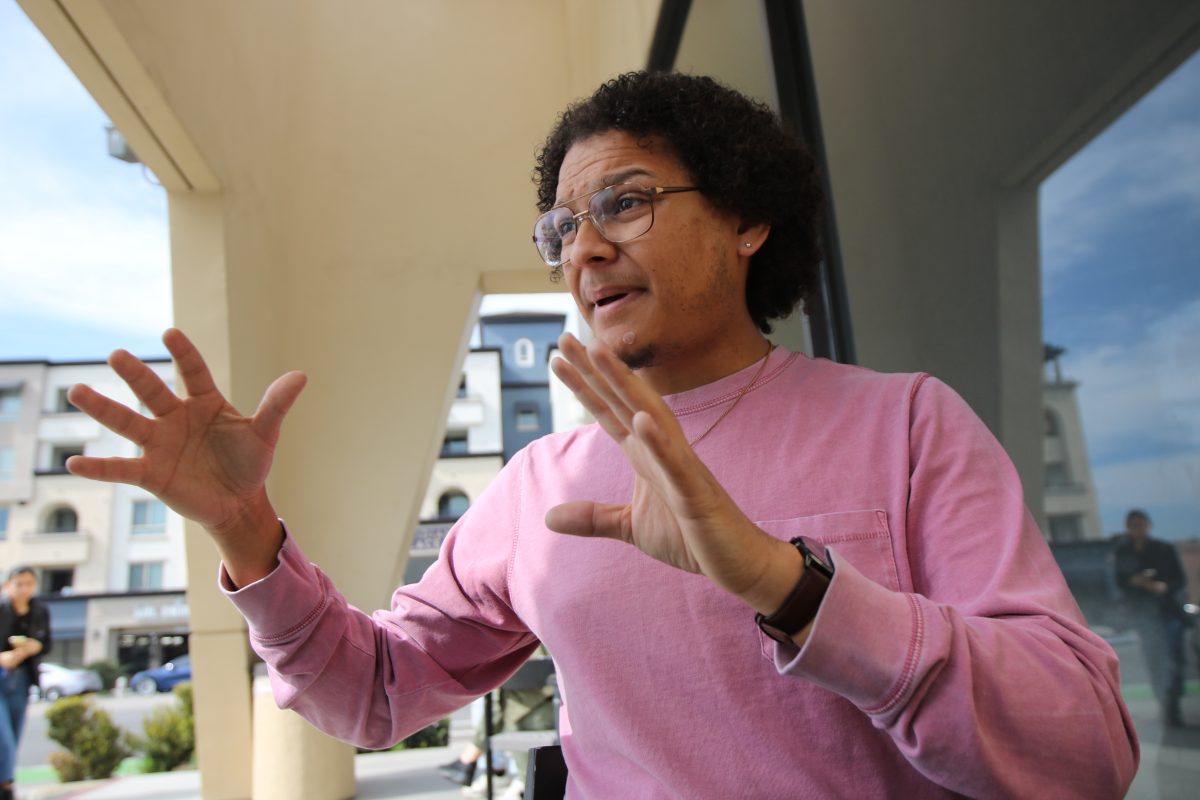
CSUN students aim to clear misconceptions of Haitian culture with an exhibit in the Oviatt Library.
Curated by CSUN anthropology students, the Images of Haiti: Selections from the Dolores Yonker Collection in the library lobby display personal drawings, journals of first hand experiences and authentic artifacts collected by a former CSUN professor of art.
Students enrolled in the Museum Anthropology course spent the semester organizing the most effective way to display Dolores Yonkers’ donated collection of Haitian artifacts and honor her interpretation and understandings of Haiti.
“Haiti has been seen as a place of disaster, but (Yonker) found the beauty of it,” said Professor Patrick Polk, the instructor of the class delegated to present the showcase.
Dedicated to uncovering a hidden side the Caribbean nation the class of 19 students filled the Oviatt Library with display cases combining colorfully decorated historical interpretations of the Haitian religion Voduo.
A graduate student of cultural anthropology, Matthew Halpern, helped fellow classmates understand the difference between the Western understanding of Voodoo and the syncretic religion of Voduo.
“Voduo is a belief system that helps (believers) cope and deal with life and society,” Halpern said.
Contrary to popular belief, Voduo is not black magic or witch craft but a belief system combining indigenous African religion and Catholicism. Combining Catholic saints and the African idea of a spiritual presence, Voduo represents the different aspects of Haitian culture.
“(The Yonker collection) shows beautiful detail and serves the purpose of telling a story,” Halpern said.
This story is conjointly outlined in 15 years of journals Yonker kept and inked sketches of Haiti that are also displayed in the exhibit.
“Even if you had no interest (in the subject) her individual drawings are striking,” said Ron Jones, a graduate student of anthology involved with the project.
Detailed hand crafted illustrations hanging over the cases add a personal touch to the thematic exhibition.
“(Yonker) saw (Haiti) from a different perspective. She had an amazing eye and was able to capture movement and emotion,” said Carole Elkins, a graduate student in the class.
Collaborating with the former chair of the anthropology department, Sabina Magliocco, and the Oviatt Library staff Professor Patrick Polk moved the class away from the original theoretical objective of the class into one of practice. Being the second of two classes taught, students in the Spring 2011 class were taken, “from the classroom to the real world,” Polk said.
Having a semester to do what usually takes at least a year, students gained an invaluable experience. With the help of David Sigler, the Oviatt Library’s reading room supervisor of special collections and archives, the students were able to navigate the un-catalogued collection, one of the most challenging aspects of the project.
“The collection was not processed or organized. Everything was boxed up and in drawers. As the project developed it became a window into another part of the world that I’ve never been,” Sigler said.
Gaining hands on experience was the objective Polk aimed for and challenged his students to be flexible and adapt to problems that arise in the museum curating process.
The finished product has moved Dean Arnold, coordinator of lobby exhibits of the Oviatt Library, to extend the showing date through August.
“The execution was great and it is a very colorful exhibit,” said Arnold of the strategic placement of the casings and overall design of the exhibit.
Students of the Museum Anthropology class hope to pass to other students lessons they learned beyond the course objective.
“(We want students) to have a greater understanding and interest instilled in them in Haitian living and learn other things instead of what society has given at face value,” Halpern said.





